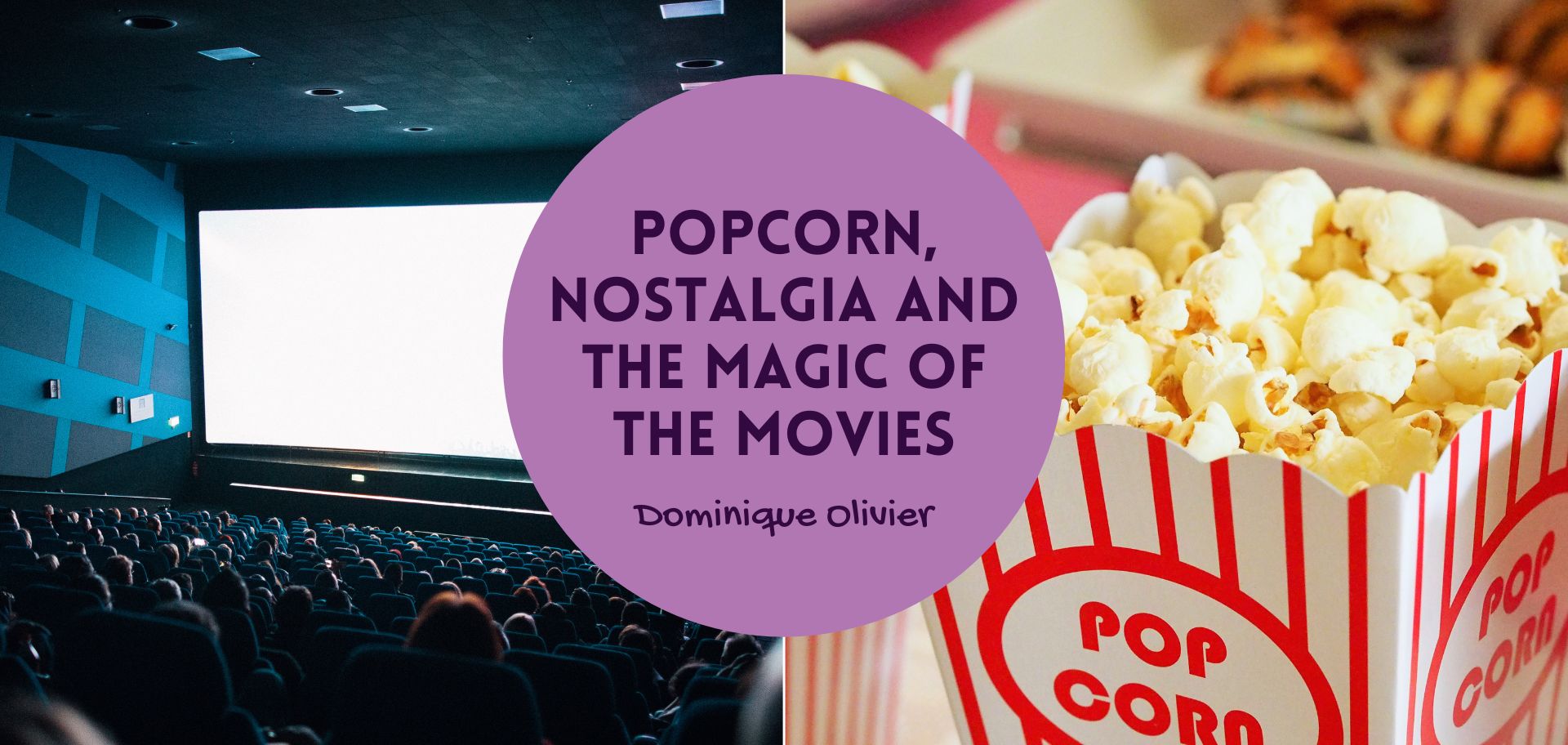Watching a blockbuster film in a full cinema is arguably one of life’s finest experiences – and certainly one worth preserving. But will cinemas as we know them be able to keep up in the streaming race – or will they have to change their use case entirely?
The fourth quarter of 2023 was Netflix’s most explosive period for subscriber growth since Q1 2020. In case these dates are too vague for you, let me colour in the picture a little better: the last time Netflix saw numbers better than the ones they just released, a global pandemic had just forced the entire world indoors with nothing better to do than to watch TV. I stand to be corrected, but I think the only companies who had anywhere near the same levels of success as Netflix during the pandemic were those who were making either vaccines or video meeting platforms.
While Netflix has certainly been minting it lately (even their crackdown on password sharing, which many users criticised as draconian, has ultimately resulted in an uptick in new paying subscribers), the same can’t be said for the big screen. The cinema business has been haemorrhaging for a good long while now, with COVID-19 striking what many thought might be the deathblow. Fortunately, major movie houses have managed to hang on by their fingernails – but for how much longer will this continue?
As a self-proclaimed cinephile, the thought of a future without the opportunity to see a film on a big screen with a tub of overly-salted popcorn on my lap is too bleak to even entertain. What will it take to save our cinemas?
From silver screen to couch stream
It took a long while for humanity to progress from being able to create simple moving pictures to screening 2-hour-long blockbusters on IMAX screens. I won’t bore you with the full history – instead, I’d like to tell you about cinema’s golden age.
The 1930s and 40s represent the peak of cinema attendance. There are many reasons for this, but two stand out as major contributors. Firstly, this was the time when most films featured both colour and sound, thereby offering a vastly improved viewing experience to the silent black-and-white films that came before. And secondly, this was the time when cinema was considered the principal form of popular entertainment.
Going to the movies was so popular at the time that most people would attend the cinema as often as twice a week. As is always the case in business, demand drives supply, and in this case, the public’s demand for movies led to the building of ornate “supercinemas”, also known as picture palaces, in major cities and large towns. I’m not talking about the kind of in-mall cinemas that we’re used to seeing nowadays – these picture palaces were standalone buildings, large enough to fit multiple screening rooms, as well as cafés and ballrooms, all under one roof. Some of these supercinemas were large enough to accommodate up to 3,000 viewers in front of one screen.
Fast forward about 8 decades into the future, and North American box office revenues peaked in 2018 at $11.9 billion, followed by a slight decline to $11.4 billion in 2019, as reported by Comscore. Numbers have only continued to decline since then. In 2020, the onset of COVID-19 led to a drastic 80% drop in domestic box office earnings, plummeting to just $2.3 billion. Remarkably, $1.8 billion of that total was generated in the first three months of the year, before the pandemic fully disrupted normal life.
Keep in mind that the pandemic threw a wrench into both the making and showing of films, stashing away movies for extended periods while keeping audiences away from theatres. However, besides the direct disruptions caused by the pandemic, North America still faces the problem of having an excess of movie screens, which makes it difficult to get theatres to capacity. Moreover, the array of choices for streaming films at home has expanded, with new releases arriving much sooner than they did previously. Suddenly, staying home and streaming a movie on the couch is as appealing an option as a night out at the movies – and at a much lower cost.
There’s nothing like a full house
I absolutely love the feeling of being in a full cinema. For me, that’s where the magic of the movies always came from – that feeling of experiencing something as part of a crowd. Sure, you might feel something similar in a sports stadium or at a concert, but there’s just something about a group of people leaving reality behind for a couple of hours and stepping into an alternative world together that keeps me coming back for more.
I’ll never forget the experience I had while watching a horror film in a Cape Town cinema years ago, when a particularly nasty jump scare prompted a gentleman in the row in front of me to exclaim “djy!” at full volume. I remember the collective gasp in a full cinema during the screening of one of the latest Star Wars films, when fans of the franchise saw the Millennium Falcon on the big screen for the first time since 1983. And of course, there was no other way that I was going to see the atomic epic Oppenheimer than on the biggest, loudest IMAX screen I could find. Mankind’s biggest bomb just doesn’t resonate as well on a TV.
Usually when I write these articles, I try to find something that we can all learn from some clever business strategy or founder’s innovation. Today, I’m just writing to make a case for a business that I believe deserves to continue existing. And I’m not alone in this line of thinking either. When cinemas in North America closed their doors during the COVID-19 pandemic, award-winning director Christopher Nolan said “When this crisis passes, the need for collective human engagement, the need to live and love and laugh and cry together, will be more powerful than ever. We need what movies can offer us.”
Now, you might call him a bit biassed, based on his career choice. I prefer to think of him as simply a fellow film enthusiast.
“Pivot!”
So, I believe we can collectively agree that movie theatres are cool and that we’d like them to stick around for the foreseeable future. But to survive the next few decades, cinemas will have to pivot in new directions in order to differentiate themselves from their streaming competition. It’s not just about screening exciting films anymore – while Barbie and Oppenheimer have shown us that hype will still drive turnout in record numbers, a feast-and-famine income model is simply not a sustainable strategy.
Herewith my 2c: a collection of suggestions that may or may not save our cinemas, some of which are already being tried out there.
Pivot 1: Up the experience
If you’re asking an audience member to leave their home in order to see a film that they could just as easily view on their couch (in a few weeks’ time), then you need to make the experience of being out of the house worth their while. An average seat and standard snacks are easy to replicate at home. But change that to a plush reclining seat and gourmet snacks – potentially even alcoholic drinks and a menu of delicacies that can be served in-cinema – and the offering becomes that much more appealing.
Pivot 2: Bring back the classics
When the original Jurassic Park was showing audiences the magic of computer generated dinosaurs for the first time in 1993, I was less than a year old – not exactly the ideal movie-going age. I also completely missed my opportunity to see such classics as Jaws, the original Star Wars trilogy, Gladiator and The Matrix on the big screen – which is why I’d be willing to pay big bucks if that chance came around again. With the recent focus on reinventing older movie franchises like Indiana Jones, Jurassic Park and Top Gun, I believe movie theatres could benefit from offering a re-screening of the original films that inspired the new releases. This isn’t as far fetched an idea as it might seem if you consider that it was already done by the Avatar franchise, which re-screened the original Avatar movie (2009) in tandem with the release of Avatar 2: The Way of Water (2022).
Pivot 3: Rent out the screen
If you tilt your head and squint at it, a movie theatre is really just a potential venue-for-hire that includes a great sound system and a really big screen. Renting a theatre can make for a unique and memorable experience for events like birthdays, anniversaries, proposals, or even just a special date night. Businesses may rent out theatres for team-building events, product launches, or employee appreciation events. Schools or educational institutions may rent theatres for special screenings tied to their curriculum or to reward students for achievements. And lastly, with the rise of esports and gaming culture, some individuals or organisations may rent theatres for gaming tournaments or to host video game release parties.
Just bring back the audiences now
In the age of streaming dominance, the allure of the big screen seems to wane, yet the essence of the cinema experience remains irreplaceable. As we reminisce on the golden age of cinema and ponder its uncertain future, one thing becomes clear: the magic of movies lies not just in the narrative unfolding on screen, but in the collective engagement of a captivated audience.
About the author:

Dominique Olivier is a fine arts graduate who recently learnt what HEPS means. Although she’s really enjoying learning about the markets, she still doesn’t regret studying art instead.
She brings her love of storytelling and trivia to Ghost Mail, with The Finance Ghost adding a sprinkling of investment knowledge to her work.
Dominique is a freelance writer at Wordy Girl Writes and can be reached on LinkedIn here.





And the pricing of tickets and snacks, I like your idea of plush seats and fancy food, but just the standard seat and popcorn is not affordable for a family of 4 anymore. I would reduce all prices to make it easier for families to budget for this rather than have an almost empty cinema with the prices they charge and make a loss, we have since the last movie just said it is not affordable to do this anymore…
Sadly the price of a movie ticket and snacks has made it really unaffordable for the average middle class family, still feeling the pressure from interest rates, Eskom etc.
Interesting ideas, but I don’t think food and alcohol is the answer. In fact the sound of someone next to me endlessly chowing popcorn and slurping on a slushie is one of the reasons to avoid the big screen. Alcohol would take this to the next level.
Judging by the comments made on this article, if the movie houses like Ster Kinekor don’t shape up and have a value offering, their business will go the way of the dodo….